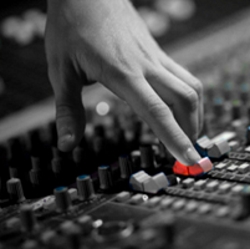I couldn’t believe my eyes!
The sound check was over and the sound guy had all the volume faders set at zero and all the EQ pots set at the noon position.
Listening to the music during the service, it was obvious there was no depth to the mix.
That was probably 20 years ago, but the memory has stuck with me.
Mix depth is the mix arrangement of sounds in a spatial manner so instruments and vocals are perceived as having aspects of dominance and distance which can provide clarity in the mix and evoke difference emotions.
An Example Of Mix Depth
One of my favorite songs is “Agnus Dei” by Michael W. Smith. Listening to the version on his “Worship” album, I hear the following:
—Smitty (lead vocals)
—Backing vocals
—Piano
—Drums
—Percussion
—Keyboard pads
—Guitar
Listening to the full chorus halfway through the song, where it all builds, the dominant sounds are:
—Smitty
—Backing vocals
—Piano
This makes sense. The lead vocal should be on top and, in the case of “Agnus Dei,” the backing vocals should support Smitty’s vocals. Then, you have the piano, the primary instrument, playing the melody. After that, you get into guitar and drums and keyboards.
The Benefits Of Depth
Depth benefits the mix in several ways:
—Easier for the listener to hear the distinct sounds. You don’t have multiple instruments fighting for the same space in volume and frequency width.
—Adds emotion. Take the song “Let it Rain” on the “Worship” album. The use of reverb on the backing vocals gives the backing vocals this huge energized powerful voice which still keeping Smitty’s vocal on top of the mix. Singing to the backing vocals, I feel I’m part of a huge choir with Smitty leading.
The Three Methods
There are three ways you can easily add emotion and clarity to your mix:
1) Volume Differences
This one is the most obvious and should be a normal part of your mixing. The louder an instrument in the mix, the closer it will seem. The softer the volume, the more distant the sound.
Take rain, for example. When it’s raining all around you, the rain is right on top of you (upfront in the mix). That same rain will make the same sound, but softer, when it’s farther away.
The lead vocal and the lead instrument should be the loudest in the mix. After that, use volume to place sounds in their best relative positions.
This is covered in-depth on the chapter “Volume Balancing” in my Audio Essentials guide.
For example, while backing vocals could be used to support the lead vocal, they could match the lead vocal, or they could be set far back in the mix for an ethereal sound.





















